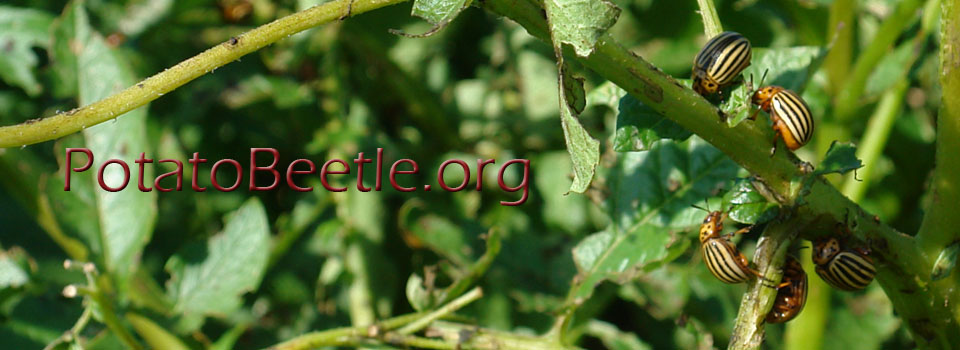Wetzel WC, Aflitto NC, Thaler JS. 2018. Ecology. 99(10):2338-2347. doi: 10.1002/ecy.2472.
A growing number of studies have manipulated intraspecific plant diversity and found dramatic changes in the densities of associated insect herbivores and their predators. While these studies have been essential for quantifying the net ecological consequences of intraspecific plant diversity, they have been less effective at uncovering the ways in which plant diversity alters trophic interactions within arthropod communities. We manipulated intraspecific plant diversity and predation risk in the field in a factorial design to reveal how a mixture of plant genotypes changes the response of an herbivorous beetle (Leptinotarsa decemlineata) to a common stink bug predator (Podisus maculiventris). We repeated the manipulations twice across the ontogeny of the beetle to examine how the effects of diversity on the predator-prey interaction differ between larval and adult stages. We found that intraspecific plant diversity, mixtures of susceptible and resistant varieties of potato (Solanum tuberosum), reduced larval survival by 20% and adult oviposition by 34%, which surprisingly put survival and oviposition lower in the mixed-genotype plots than in the resistant monocultures. Moreover, we found that predation risk reduced larval survival 25% and 11% in resistant and susceptible monocultures, respectively, but had no effect in the mixture. This result indicated that our genotypic mixing treatment interacted nonadditively with predation risk such that plant diversity altered the predator-prey interaction by changing the responses of the beetles to their stink bug predators. In addition, even though predation risk reduced larval survival, it increased adult overwintering survival by 9%, independently of plant treatment, suggesting that these interactions change through ontogeny. A key implication of our study is that plant diversity influences arthropod communities not only by changing resource quality, as past studies have suggested, but also by changing interactions between species within the arthropod community.
